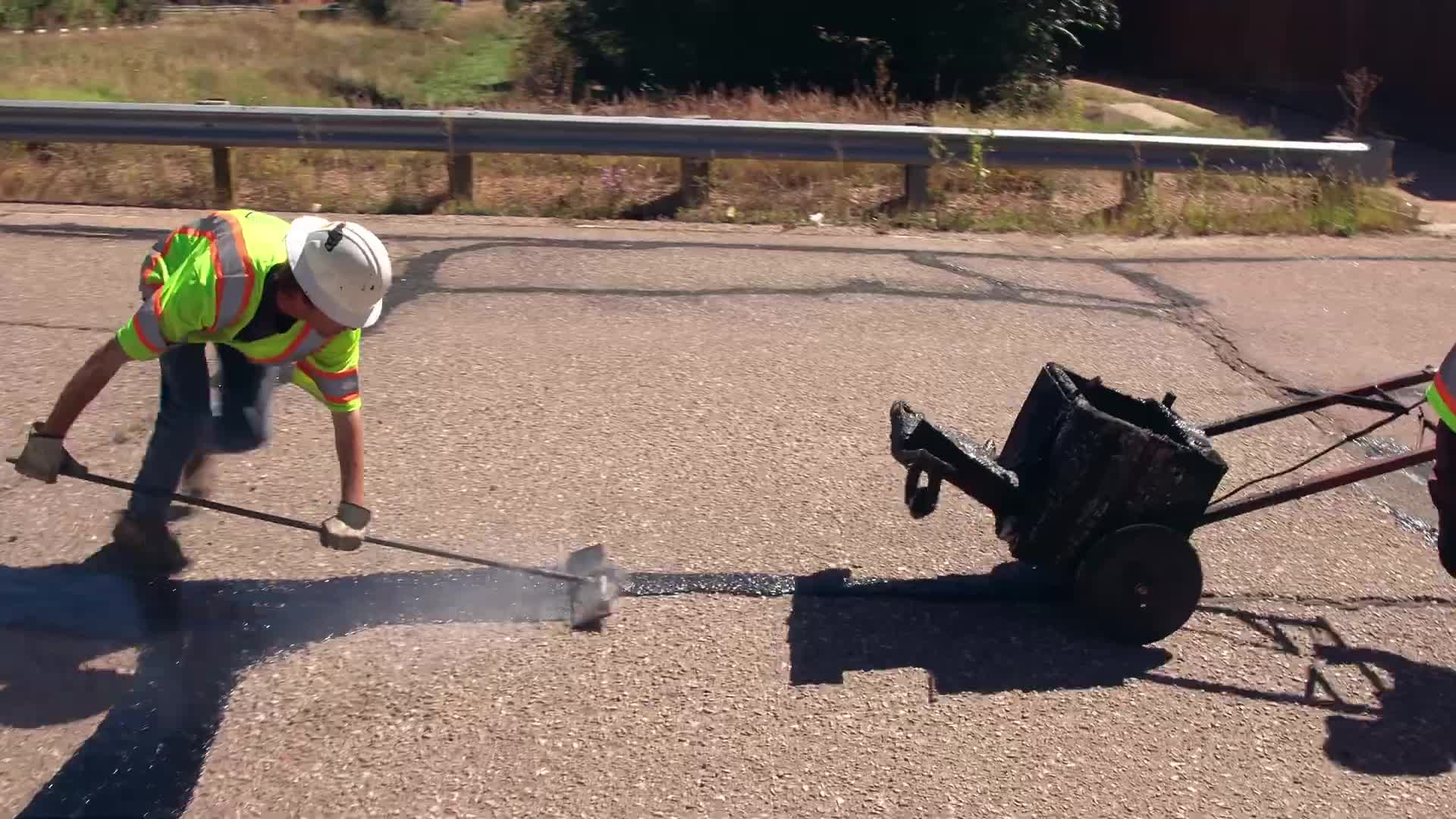El Paso County describes crack-seal and mastic-seal methods used to protect roads
This article was created by AI summarizing key points discussed. AI makes mistakes, so for full details and context, please refer to the video of the full meeting. Please report any errors so we can fix them. Report an error »

El Paso County Public Works staff described two pavement-preservation methods—crack sealing and mastic sealing—used to prevent water infiltration and extend the life of local roads.
A staff member said, “Crack sealing and mastic sealing are important pavement preservation methods used by El Paso County to extend the life of our roads.” The county described crack sealing as targeting small to medium pavement cracks; crews clean the cracks with high-pressure air or a heat lance, apply a hot, rubberized sealant, smooth it with a squeegee and cover the seal with blotter sand to help it cool and add skid resistance.
The nut graf: County officials said both methods are intended to keep water out of the pavement structure and protect base materials, slowing deterioration and reducing the need for larger repairs.
According to the county, crews notify residents before operations and place temporary no-parking signs. For larger cracks, potholes or surface distresses, the county described a mastic sealing process in which a hot-applied mixture of asphalt binder and aggregates is placed into damaged areas, then leveled and smoothed to create a durable, skid-resistant repair.
The county characterized both processes as preservation rather than full reconstruction. The staff member said the same equipment is used for cleaning and placement in both methods and emphasized that mastic seal repairs “restore strength to the pavement and help prevent further damage.”
The presentation concluded by noting that these treatments are part of the county’s routine paving operations to maintain safer, longer-lasting roads for the traveling public.
A staff member said, “Crack sealing and mastic sealing are important pavement preservation methods used by El Paso County to extend the life of our roads.” The county described crack sealing as targeting small to medium pavement cracks; crews clean the cracks with high-pressure air or a heat lance, apply a hot, rubberized sealant, smooth it with a squeegee and cover the seal with blotter sand to help it cool and add skid resistance.
The nut graf: County officials said both methods are intended to keep water out of the pavement structure and protect base materials, slowing deterioration and reducing the need for larger repairs.
According to the county, crews notify residents before operations and place temporary no-parking signs. For larger cracks, potholes or surface distresses, the county described a mastic sealing process in which a hot-applied mixture of asphalt binder and aggregates is placed into damaged areas, then leveled and smoothed to create a durable, skid-resistant repair.
The county characterized both processes as preservation rather than full reconstruction. The staff member said the same equipment is used for cleaning and placement in both methods and emphasized that mastic seal repairs “restore strength to the pavement and help prevent further damage.”
The presentation concluded by noting that these treatments are part of the county’s routine paving operations to maintain safer, longer-lasting roads for the traveling public.
View full meeting
This article is based on a recent meeting—watch the full video and explore the complete transcript for deeper insights into the discussion.
View full meeting